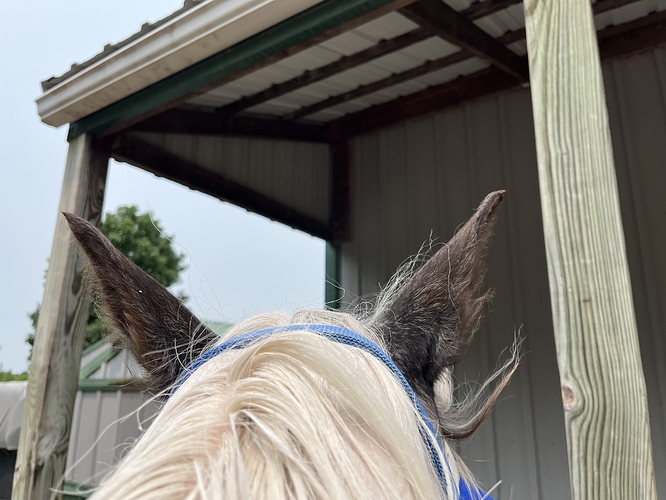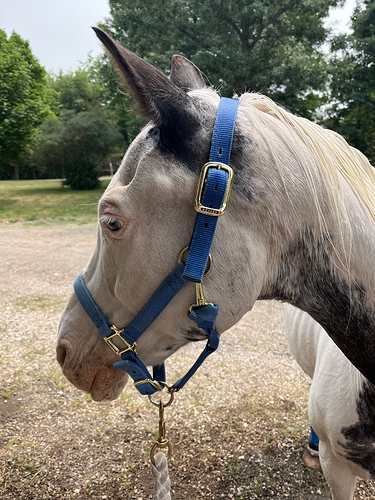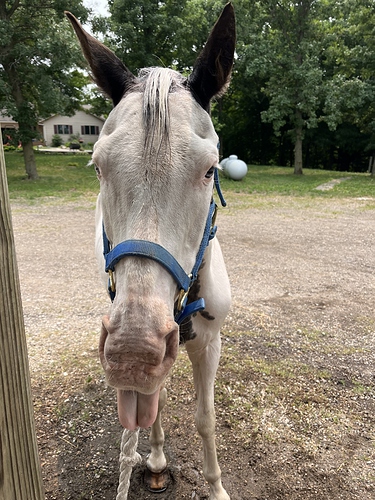@MorganMaresVT That’s really good news! Are there any lasting side effects?
Matilda had a slight temperature when the vet checked her. Who knows how long she’s been infected, but likely a couple of weeks to month, since that’s when the ticks were really out in force around here (although we don’t know for sure where she came from). Her hooves seem to show signs of a past fever. They compounded the doxy for us into neat little flavored (banana?) packets to dump on her feed twice a day and mix with a little water to get it to stick. So far, she’s enthusiastic about eating it, as she is about all food. I suppose that’s what happens when you don’t get enough. 







